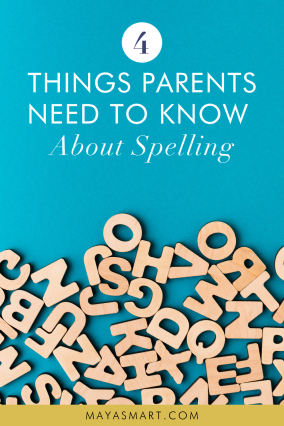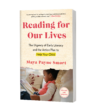Six years ago, I wrote a blog post titled How to Vanquish Email Overload Once and For All. “Go Serena Williams on your email messages,” I advised. The key, as I saw it then, was to whack emails out of your inbox with the “aggression and precision of a champion.” If you had a clear vision of where your emails’ content should land—the trash, Dropbox, your to-do list—then there was nothing to it but to do it.
In 2019, I still agree with the basic premise, but a busier and more complex life has highlighted one more factor: the need for dedicated email processing time. When I wrote my first “inbox zero” post, my daughter was two years old. I was on one nonprofit board and active in one volunteer group. But when I moved to Austin, my activity ballooned to as many as three boards and four volunteer groups at once. Plus, my daughter’s activity in school, sports, Girl Scouts, and more multiplied, bringing with it countless email notifications.
The volume of emails I received daily had grown tremendously, but my expectations around how much time I would devote to them hadn’t. The old methods and mindsets were no match for my new life’s demands, because I wasn’t allowing myself enough time to execute them. I rushed through messages, only partially and hurriedly addressing their content. I ignored messages until they resolved themselves or were no longer relevant. I passed the buck by “boomeranging” messages—scheduling them to return to my inbox a day or week later, pretending I’d have more time or interest to address them appropriately then.
When I increased the activities that required me to read and respond to messages, I needed to increase the amount of time that I spent on email accordingly. At first, I viewed increased email time as a capitulation to a time-sucking distraction from “real work.” But when I leaned into it, I realized that the vast majority of the content was valuable. In my race to keep up with messages, I had already unsubscribed from junk newsletters and unwanted notifications. What remained had value.
Despite the high volume of email, my inbox’s content has never been more interesting or important than it is these days. Sure, it takes at least 2 hours a day to responsibly process it all, but it’s good stuff. The messages I receive are from organizations and people I am deeply engaged with, and they’re about matters I’ve chosen to stay updated on. They warrant a certain amount of time and respect.
With this new perspective that email done well is part of the work, I’m back to clearing my primary inbox to zero once or twice a day. I am experiencing the extraordinary peace of mind that comes from handling messages with care and intention. I know nothing’s slipped through the cracks. I know I’m responsive to the requests of those I care about or work with. I know I’m taking care of business.
Most importantly, I’m recognizing my limits. I’m not adding one more activity to my plate. In fact, I can think of a couple that need to go.
To recap, my new inbox zero approach goes something like this:
Step 1: Call the shots. Select a time or trigger that tells you it’s time to face-off against your emails. I attack my inbox late in the morning, after I’ve completed my writing priority for the day. Email’s important, but it’s not first.
Step 2: Be aggressive. Look at the one shot (er, email) that’s in front of you and resolve to send it flying over the metaphorical net to where it belongs. This may be into the trash can, into someone else’s inbox (via a thoughtful reply or judicious forward), onto your to-do list, into a file for future reference, or unsubscribing from future messages altogether. That’s it. Those are your only choices.
Step 3: Know the endgame. Direct your shots by getting very clear on the kinds of messages you routinely receive and thinking through the best landing spots for the information they contain. Put the content itself somewhere useful, like your calendar, a task list, or your project notes. Do not use your inbox as a reminder system!
How well are you managing your email inbox? What works well for you? What’s not working?
Memorization gets a bad rap, but it works very well for some words and children. Time and again researchers find that focused attention, transcription, and recollection of select words helps kids master challenging spellings. The key is to treat memorization as a supplement, not as the sole or even primary method of spelling instruction.
First and foremost, parents teaching spelling at home should strive to create a culture of interest and engagement with words. We should focus on weaving a variety of spelling games, routines, and activities into daily life. But here’s some advice for getting the most out of memorization, the last resort for words kids just can’t recall any other way.
The “cover-copy-compare” method is your best bet for training hard-to-learn spellings. Students have used the procedure across subjects, from math to geography, and significant research has documented its effectiveness. Plus, it’s straightforward, low-cost and time-efficient—a win for parents.
For spelling, the “look-say-cover-write-check” variation of cover-copy-compare is particularly effective. (Yes, these are technical terms.) As a parent, your job in this case is to support your child in studying important words they’ve failed to learn by other means (that you’ve taught them). You provide the model spelling, explain the self-study practice routine, and get out of the way.
Then it’s up to the child to follow the procedure:
1. Look at a correctly spelled word and mark the challenging parts.
2. Say the word.
3. Cover the word, close their eyes, and try to visualize the word in their mind.
4. Write the word on paper.
5. Check for correctness by comparing the written word to the model.
6. If incorrect, note the nature of the error and copy the word correctly.
I’ve witnessed this method firsthand. My daughter’s teacher sent home an 18-step variation of this spelling practice routine. She taught the procedure to students in class. Then she shared an abbreviated version in a video demo for parents—the students just copied words once in the video, instead of the prescribed three times. This was the first sign that this process might be too long and repetitive for at-home use. At any rate, here’s the full procedure, in case it works for you:
1. Look at the model word.
2. Say the word.
3. Define the word to distinguish it from homophones (words with the same pronunciation but different spellings).
4. Analyze each letter of the word one-by-one and mark the challenging parts.
5. Say the word out loud again.
6. Name each letter while tracing it.
7. Name each letter while tracing it a second time.
8. Name each letter while tracing it a third time.
9. Close eyes and write the word in the air with the index finger. This procedure is often called “air writing” or “memory writing.”
10. Air write the word a second time.
11. Air write the word a third time.
12. Say the word again.
13. Spell it on paper without access to the model word.
14. Spell it a second time.
15. Spell it a third time.
16. Compare to the model word.
17. Check for correctness.
18. If incorrect, note the error and copy again.
The full procedure felt like overkill to me so I never asked my daughter to do it. Later, I got some support for my view when I came across research suggesting that repeated word copying adds no value. It’s the self-evaluation and self-correction steps in the practice routine that matter most.
It’s worth parents’ time to help kids memorize challenging words by focusing on their sound, meaning, and construction; practicing recalling the spelling; comparing their spelling to the model; and fixing mistakes. Just don’t get stuck there: your main aim is to teach how the English spelling system works, not to train individual words.
Read my post on How Children Learn to Spell for the lowdown on where memorization fits among spelling strategies, and keep an eye out for more spelling tips in upcoming posts.

Sources and Further Reading
Joel Erion, Cindy Davenport, Nicole Rodax, Bethany Scholl and Jennifer Hardy, “Cover-Copy-Compare and Spelling: One Versus Three Repetitions,” Journal of Behavioral Education 18, no. 4 (December 2009): 319-330
Olivia O’Sullivan, “Teaching and Learning Spelling,” in The Literate Classroom, ed. Prue Goodwin (London: Routledge, 2017), 141-156.
Tayari Jones is unequivocal in her belief that mass incarceration, with its attendant state violence, is the “most pressing civil rights issue of our day.” Yet her latest novel, An American Marriage, makes an unjust incarceration the backdrop for a nuanced interrogation of another issue of social freedom and equality: a wife’s right to pursue her own desires and fulfill her aspirations independently of her husband.
Celestial is an artist on the cusp of critical and commercial success at the same time that her husband is wrongly convicted and sentenced to 12 years in the Louisiana State Penitentiary. She can’t right the wrong, so her choice becomes whether or not to become a monument to his suffering.
Jones’ thoughtful rendering of the tension between what Celestial owes Roy and what she owes herself is riveting. With sensitivity and power, she pits duty against desire in a rich tapestry of recollections and letters that recount their romance, separation, and explosive reunion.
Continue reading “Tayari Jones Discusses An American Marriage”Dark and absorbing, Nafissa Thompson-Spires’ debut story collection, Heads of the Colored People, explores the unstable moorings of black identity and citizenship in blistering stories peopled with indelible characters.
The title derives from a series of 19th-century literary sketches of free black laborers penned by Dr. James McCune Smith. That Smith, a black abolitionist, intellectual, and elite, chose washerwomen and gravediggers for literary representation and pondered them as “heads” of the black community was remarkable. As was his sharp inversion of the day’s popular fascination with phrenology. Where the pseudoscience obsessed over the shapes and sizes of black skulls, Smith’s brief narrations of black life imagined black labor as a means of uplift.
Thompson-Spires’ contemporary riff on Smith’s theme grapples with heads more broadly, from concussions and migraines to leadership and psychology, and is just as provocative. While heads factor into each story, it’s the heartbreaking vulnerability of black bodies that will sear readers’ memories. The visceral details—a cigarette burn, a fibroid with teeth and hair, a stump sealed with skin like the thread of a baseball caked in clay—ground the literary allusions and intellectual abstractions in blood and bone.
Continue reading “Nafissa Thompson-Spires Discusses Heads of the Colored People”The stunning Austin Central Library, already a finalist for the International Federation of Library Associations’ Public Library of the Year, leaped in prestige by winning LEED Platinum Building Certification this summer.
The award confirms that the space’s design and construction exemplify the utmost concern for human and environmental health. The library scored high marks for its green power, water-recycling systems, daylight use, views and community connectivity. Yet, we should feel challenged — not satisfied — by this last designation. Renewable-energy use, efficient landscaping and wastewater technologies are built-in, but considerable effort is still required to create real community connectivity. That is, the kind of bonds among people that exist beyond the realm of LEED’s neighborhood density and pedestrian access targets. We’ve built an impressive library, but what must we do to ensure that the people come? Not just avowed bookworms, architectural tourists, and downtown high-rise dwellers, but the broadest swath of our community possible?
Early indications are promising. The library staff, led by director Roosevelt Weeks, have stepped up efforts to welcome and wow diverse library visitors. I witnessed it recently when I accompanied a group of 30 black and Hispanic kids from the Children’s Defense Fund’s Freedom Schools summer program to the Central Library. Most of the kids hailed from underserved East Austin neighborhoods and hadn’t heard much about the library, let alone visited it.
Library staff greeted the bus and showed the awestruck guests every floor of the architectural wonder. In the special events area, the kids donned virtual reality headsets, learned to program tiny robots, experimented with electronic building blocks, and heard a story read by local author Willie S. Anderson. Staff also gave the students the low-down on getting books, homework help, and other resources through the library.
One small exchange exemplified the spirit of the visit.
“How many books do you think are in here?” a librarian asked, referring to the children’s section. The kids’ guesses ranged from 44 to millions. The truth was closer to 60,000.
“And who do they belong to?”
“The authors,” one shouted.
“The library,” another said.
“They belong to you,” she replied. “This collection belongs to you. Not just the books. The whole library. We just take care of them for you.”
The speaker, the statement, and the audience all struck me. I was happy to be present when the kids learned that libraries — even massive, glittering, “green” ones — are made for them. Though America’s public libraries have always professed a charge to serve all, they have a history of exclusion that mirrors that of the nation itself. Who counts as “the public” has been hotly contested. Witness the racial segregation laws that denied my maternal grandmother access to every branch in the Louisville Free Public Library system but one — the Western “colored” branch.
Years later, when my mother was born in 1946, less than a third of public library systems in the South reported serving African-Americans. That the majority couldn’t be bothered to provide even a bookmobile or segregated reading room conveys volumes.
For my mother, like her mother before, the Western branch in Louisville, Kentucky, was a haven. It spared her both the ignorance of having no library at all and the intimate indignity of entering the backdoors of white libraries to be confined to isolated colored reading rooms. The haven of that library helped her build the knowledge and skills that would carry her through graduate school and a career. At her retirement party, she quoted Walter Anderson, who said, “I read myself out of poverty long before I worked myself out of it.”
Everyone deserves that privilege. And in the Austin Central Library, standing with my own daughter, hearing a librarian’s declaration of inclusion, I saw a glimpse of the kind of community connectivity we should aspire to. It looks like caring people flinging the doors of our libraries wide open, intentionally ushering in new visitors, and making sure that they all feel at home.
Smart serves on the boards of the Austin Public Library Friends Foundation, the Texas Book Festival and the University of Texas Libraries Advisory Council.
Read full version here.
At any writers’ conference you’ll hear about how important a captivating book proposal is for wooing agents. But there’s one proposal section that’s seldom discussed and little understood—yet which warrants more attention if you want to succeed.
That’s the section listing “comps” for your book. The name alone invites confusion. Ask three agents what it means and you could get as many responses. Competitive books, one might say, while the others suggest comparative or complementary titles. And, though similar, each term carries distinct connotations. Competitive books might be bought instead of your book, while complementary books might be bought alongside it. Comparative books might be completely unrelated in subject, but have another facet in common with your book, such as design, tone, or structure.
Whichever the variety, comps can be incredibly illuminating and powerful tools for writers seeking to convey where their tome fits in the market. Your selections should show how knowledgeable you are about current literary trends and communicate how your manuscript will mirror winning traits of recent strong-selling titles. (Select books released within the last five years. Recency is important because the market and readers’ appetites are dynamic.)
“It’s not about saying, ‘My book is better than this book, or my book is going to sell more than this book,’” explains Cindy Uh, a senior agent with Thompson Literary Agency. “It’s about saying, ‘There are aspects of this book that worked and those aspects are also reflected in my book.’”
Author Alison Macor encourages “getting out from behind your computer and actually going to a bookstore” when researching comps. “I think people think about this less now because so much is within our reach just from our device, but it really does help to go out to the bookstore and see where books are,” she says. The in-person research mission might surprise you with comp titles you hadn’t considered or fresh insights into where your book-to-be belongs on the shelf. Talking to booksellers and reading “shelf talkers”—the mini-reviews displayed in stores—can also guide you in promising directions.
Just be sure to consider sales when making your final selections. If the titles you find similar to yours bombed, it doesn’t bode well for your project. Few writers have direct access to sales figures (which are available through pricey subscription services like BookScan), but you should get a general feel for the success of comp titles you may include in your proposal by reading reviews, checking Amazon sales rankings, and monitoring bestseller lists from the New York Times, Amazon, and Publishers Marketplace.
And don’t feel like you have to include THE bestselling title in your category. In fact, you’ll stand out more (in a good way) if you don’t. “Don’t compare your book to ‘Wild’ and don’t compare your book to ‘Eat, Pray, Love,’” advises Kristin van Ogtrop, the former editor-in-chief of Real Simple magazine and a new literary agent with InkWell Management. “Every day I get a pitch that [someone’s memoir is] like ‘Wild’ or it’s like ‘Eat, Pray, Love.’ You can do better than that.”
Van Ogtrop recommends viewing comps in terms of audience and pondering the question, “The people who like this book will also like my book because …?” This expands the realm of prospective comps beyond straight comparisons—and unrealistic ones.
For example, a grief memoir’s comps needn’t be five other grief memoirs, observes Uh. “Think outside the box. You can look to other aspects of your book—the humor, the tone, the voice, the organization, what emotions it brings,” she says. “These are the most interesting comp titles to me, when I’m able to see somebody bring in the strengths of other books and say, ‘This is what my book ties together.’”
Recommended Reads
How to Write a Book Proposal: The Insider’s Step-by-Step Guide to Proposals that Get You Published (Fifth Edition)
By Jody Rein and Michael Larsen
Thinking Like Your Editor: How to Write Great Serious Nonfiction and Get It Published
By Susan Rabiner and Alfred Fortunato
—
All quotes are from the “Genre Close-Up: Nonfiction and Memoir Proposals” panel I moderated at the 2019 Writers’ League of Texas Agents & Editors Conference. Thanks to Alison Macor, Kristin van Ogtrop, and Cindy Uh for sharing your expertise!

We’ve all heard about how good it is to read aloud to our children, and the many ways it benefits them. Kids can gain oral language skills, new vocabulary, familiarity with foreign worlds, and the undivided time and attention of an adult through storytime. But moms and dads can experience powerful and lasting benefits, too, when they commit to and revel in reading with kids.
Here are five parents’ reflections on the fresh perspectives, fond memories, and cherished connections they gained through family reading:
A minute spent reading to your kids now will repay itself a million-fold later not only because they love you for reading to them, but also because, years later, when they’re miles away, those quiet evenings when you were tucked in with them, everything quiet but the sound of the page-turns, will seem to you, I promise, sacred.
George Saunders
On days when I’ve felt as though I have nothing left to give to my kids, I’ve been able to sit next to them and open a book. We start reading, and the world looks different.
Maria Russo
Reading aloud is a restorative that can replenish what technology leaches away. Where the screen tends to separate family members by sending each into his own private virtual reality, reading together draws people closer and unites them.
Meghan Cox Gurdon
One of the unsung but cozy effects of reading aloud is the private language that develops in families through shared book experience. Chloe and I went on a picnic once when she was six, and she asked—even before we’d unpacked the basket—what we were having for ‘afters.’ I told her there was more sensible food to be eaten before ‘afters’ could even be considered.
‘Well, one must sustain oneself,’ she said, in a six-year-old huff.
The phrase had come directly from Winnie-the-Pooh. Over time it became one of the standard sayings in our family, especially when my husband, Malcolm had eaten all the chocolate in the house.
‘Well, one must sustain oneself,’ he would say, with a guilty look.
We were knitted into the same familial fabric by a book language that meant nothing to people outside our immediate little trio. It was a private ‘togetherness’ code that connected us all.
Mem Fox
I refrain from kissing the top of his head again and try not to think that this moment of my youngest child beside me, the two of us inside one story, won’t always be here. This now is what matters, young reader. The moment we’re all living in is what counts—how will this moment, and the stories we’re living inside of change us … forever? The smell of my son’s hair, his laughter, his whispered ‘Oh man!’ And now, him saying softly ‘That’s not kindness, right Mommy?’ This is what reading does. This is what matters most. I smile and turn the page.
Jacqueline Woodson
Pin Me for Reference 📌:

The reassuring authors of raise-a-reader books often prescribe a chill pill and a nightly dose of bedtime stories to parents anxious about their kids’ reading. They devote page after page to poignant stories of family reading, complete with shared laughs and smiles, the warmth and comfort of a parent’s lap, and the smell and feel of a book’s spine cracked open for the first time.
I love the joy-of-reading sentiment and the moving accounts of family memory-making around books, but I worry about the comparative silence around other literacy-building activities. The groundswell of storytime support (though well-deserved) leads many parents to wrongly conclude that reading aloud regularly is all it takes to raise thriving readers.
There’s danger in declaring that the achievement of life goals (like college, fulfilling work, economic independence) will “flow naturally” from a love of books and stories—as New York Times Book Review editors Maria Russo and Pamela Paul do in How to Raise a Reader. There’s a risk in urging us to focus on the “pure” pleasure of reading and to leave the nuts and bolts of phonics, assessments, and benchmarks to schools. There’s a cost to minimizing the role of direct skills instruction in the home and framing it as a boring pursuit best left to teachers.
In reality, there’s so much more than reading aloud that we should do to support our children’s literacy, from building oral language skills through intentional conversation to directly teaching letter names and sounds when needed. And, frankly, most of us can’t afford to rely on schools alone to teach reading skills. Schools simply aren’t equipped to get the job done without outside help. Witness the skyrocketing demand for private tutoring in the elementary years and the low reading achievement scores among demographics that can’t access supplemental instruction.
Children whose parents can’t (or won’t) afford expensive remediation are far-too-frequently suffering long-term and even lifetime consequences. And families whose parents can (and do) purchase extra help for their children are losing dollars and hours that might well have been saved through proactive literacy activities in the early years.
Keeping it real, here are four reasons why parents need to learn to teach—not just model—reading:
1. Parents are best positioned to lay a strong foundation for literacy. The groundwork for successful reading is laid in the pivotal first five years of life. As children’s first teachers, parents need to know how reading develops if we are to play our role to full advantage. Parents are fully capable of bolstering pre-reading skills in fun and effective ways from day one.
Limiting our literacy activity to reading bedtime stories essentially means forfeiting considerable power to seed reading success. Instead, we should be laying the reading groundwork by consciously boosting oral literacy skills, directly teaching letter sounds and names, and intentionally directing kids’ attention to print conventions, such as reading from left to right and from top to bottom.
Kindergarten language skills are the single best predictor of school achievement across all subjects in third and fifth grade.
2. Parents who understand typical reading development are more attuned to early risk factors and warning signs of challenges. The first signs of dyslexia can emerge in children as young as one to two years old, long before school starts. Parents are uniquely well-suited to monitor early developmental milestones and to discover any family history of reading trouble—making it more likely children will receive timely intervention if they need it and thus boosting the odds of success.
3. We can’t assume our children will receive quality reading instruction in school. Sadly, teacher inexperience, muddled curriculum, and schools’ weak assessment and remediation capacity combine to hobble most students’ reading progress. The National Council on Teacher Quality evaluated universities a few years ago on how well they were preparinge teachers to teach reading, and dozens of them earned failing marks—including highly regarded schools of education.
Just 37 percent of teacher preparation programs trained prospective teachers in the best evidence-based reading instruction methods at that time. Only 11 states effectively tested special education and elementary teacher candidates on their science-of-reading knowledge and skills. And in some publicly funded universities, teacher candidates received as little as 20 minutes of phonics instruction in their two-year-long teacher prep programs. All that means that many teachers in service now missed out on fundamental preparation to effectively teach reading.
4. Kids need well-informed advocates within schools to ensure that their individual needs are met. When kids enter school, our role as parents expands to include overseeing how well our children’s school, teachers, and curriculum meet their needs. We’re only prepared to do that work well when we’ve already put in the time to understand typical reading development, to recognize when our children are on the path, and to grasp what’s needed to foster future growth.
I understand where cognitive scientist Daniel Willingham is coming from when he warns parents to “resist the urge to engage in reading instruction unless you have reason to believe you know what you’re doing” in his book, Raising Kids Who Read. And I’m calling on all parents to accept the challenge of learning what to do to teach reading. Your child’s education just might depend on it.
To help, I’ve crafted a digital course that’s designed to be a kind of reading boot camp for parents. It’s a small time commitment, all done on your own schedule. In it, parents learn easy, fun, high-impact ways to prepare kids aged 0-5 for reading success in kindergarten and beyond. Check out Reading Made Simple now!
Pin Me for Reference 📌:


Sources and Further Reading
Martin-Lacroux, Christelle, and Alain Lacroux, “Do Employers Forgive Applicants’ Bad Spelling in Resumes?” Business and Professional Communication Quarterly (2016), https://doi.org/10.1177/2329490616671310.
Graham, Steve, Karen R. Harris, and Michael Hebert, “It Is More than Just the Message: Analysis of Presentation Effects in Scoring Writing,” Focus on Exceptional Children 44, no. 4 (2011): 1–12.
Rossi, Maya, Sandra Martin-Chang, and Gene Ouellette, “Exploring the Space Between Good and Poor Spelling: Orthographic Quality and Reading Speed,” Scientific Studies of Reading 23, no. 2 (2019): 192–201, https://doi.org/10.1080/10888438.2018.1508213.
Paige, David D., Grant S. Smith, Timothy Victor Rasinki, William H. Rupley, Theresa Magpuri-Lavell, and William D. Nichols, “A path analytic model linking foundational skills to Grade 3 state reading achievement,” The Journal of Educational Research (2018): 1–11, https://doi.org/10.1080/00220671.2018.1445609.
Graham, Steve and Tanya Santangelo, “Does spelling instruction make students better spellers, readers, and writers? A meta-analytic review,” Reading and Writing 27 (2014): 1703–1743.
Joshi, R. Malatesha, Rebecca Treiman, Suzanne Carreker, and Louisa C. Moats, “How words cast their spell,” American Educator 32 (2008): 6–16.
Emphatic and unsparing, Kiese Laymon’s Heavy explores the weight of wellness in a culture obsessed with lean. His expansive intelligence and fluid prose bear up to haunting family secrets and American deceptions with deep, potent wells of beauty, humor, and empathy.
Initially conceived as a weight-loss story chronicling his family’s struggles with food and violence, the writing of Heavy, which was recently named a finalist for the 2018 Kirkus Prize for Nonfiction, got murkier when relatives sidestepped his interview questions or lied altogether. “We’re a family, like most families, of addicts, but we never talked about the addiction,” he says. “We would talk about losing weight or gaining weight but we never talked about why. We never talked about particular memories around domestic, sexual, and racial violence.”
Continue reading “Kiese Laymon Discusses Heavy”

